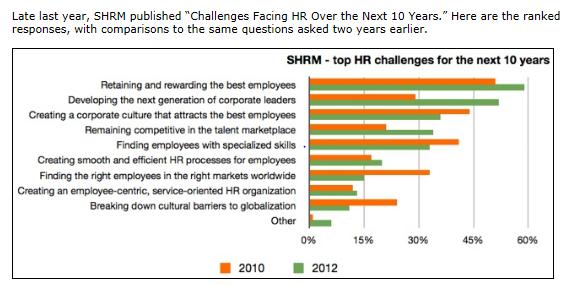Appraising Talent
Leave a Comment How are you Appraising Talent?
How are you Appraising Talent?
Performance reviews can vary in quality, in structure as well as delivery. Structurally they often include a review of measurable goals completed over the last period and a series of measurable goals to be completed over the next appraisal period. They may also cover development requirements and some suggestions/requests for coaching, training or mentoring. Discussions around these topics are generally fairly straightforward and the quality of the delivery will depend very much on the value the manager places on the performance review, or even their belief in their ability to perform themselves in the review. Whether or not the review is conducted well or poorly some subjects will rarely be approached.
Attitudinal abilities are rarely measured. For example when was the last time you were asked about your level of optimism, your ability to take initiative, your analytical skills or your levels of enthusiasm for the role? What about your interpersonal skills or your strategic acumen or your organization skills? Maybe you lack warmth and empathy or are too frank with people or you are so open and reflective that you find decision making difficult.
Two years ago we were asked by the HR Director of South Gloucestershire and Stroud College to get involved in their appraisal system. The College is the result of two very different colleges amalgamating into one and the HR Director was keen to promote a cohesive culture based on some strong values and behavioural competencies. We were able to create a profile of 6 essential behavioural traits, 15 desirable ones and 9 traits to avoid to represent their desired culture using the highly accurate and robust Harrison Assessment Talent Assessments. Every member of staff is measured against the profile on a yearly basis and the profile has been incorporated into the performance review process.
The benefits are clear –
- Managers now feel able to ask questions which may previously have been avoided. For example if levels of enthusiasm appear to have dropped then a conversation can be had around the causes. If an employee appears not to be taking enough initiative then this can be explored and so on. The system also offers suggestions on how to develop the traits which may be lacking.
- Expectations of what is required of employees is quite clear. They have this at the forefront of their minds throughout the appraisal period and learn to behave accordingly. For example, people are expected to look for solutions to their challenges and challenge the status quo if necessary. They are expected to take responsibility for their own personal development and be aware of the impact they have on others.
- The profile can also be used to recruit against. Going forward the College will be able to ensure that their new employees have the qualities that support the College ethos.
If you would like to know more about developing a performance profile using HATS get in touch on +44 (0)7768 922244.






